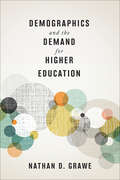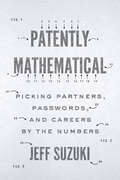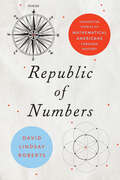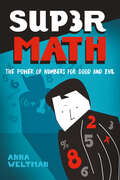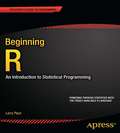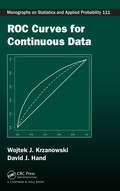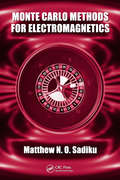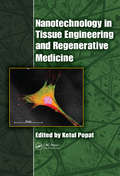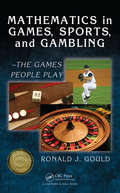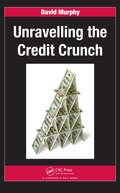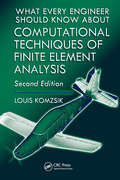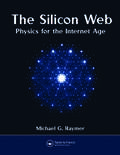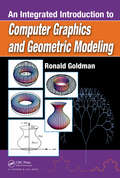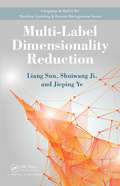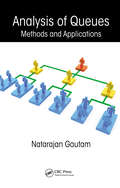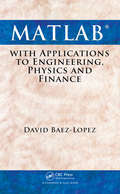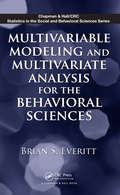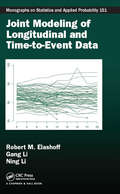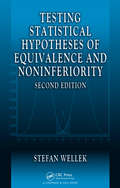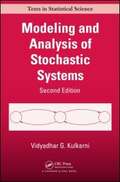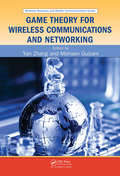- Table View
- List View
Demographics and the Demand for Higher Education
by Nathan D. GraweHigher education faces a looming demographic storm. Decades-long patterns in fertility, migration, and immigration persistently nudge the country toward the Hispanic Southwest. As a result, the Northeast and Midwest;¢;‚¬;€?traditional higher education strongholds;¢;‚¬;€?expect to lose 5 percent of their college-aged populations between now and the mid-2020s. Furthermore, and in response to the Great Recession, child-bearing has plummeted. In 2026, when the front edge of this birth dearth reaches college campuses, the number of college-aged students will drop almost 15 percent in just 5 years.In Demographics and the Demand for Higher Education, Nathan D. Grawe has developed the Higher Education Demand Index (HEDI), which relies on data from the 2002 Education Longitudinal Study (ELS) to estimate the probability of college-going using basic demographic variables. Analyzing demand forecasts by institution type and rank while disaggregating by demographic groups, Grawe provides separate forecasts for two-year colleges, elite institutions, and everything in between. The future demand for college attendance, he argues, depends critically on institution type. While many schools face painful contractions, for example, demand for elite schools is expected to grow by more than 15 percent in future years.Essential for administrators and trustees who are responsible for recruitment, admissions, student support, tenure practices, facilities construction, and strategic planning, this book is a practical guide for navigating coming enrollment challenges.
Demographics and the Demand for Higher Education
by Nathan D. GraweHigher education faces a looming demographic storm. Decades-long patterns in fertility, migration, and immigration persistently nudge the country toward the Hispanic Southwest. As a result, the Northeast and Midwest;¢;‚¬;€?traditional higher education strongholds;¢;‚¬;€?expect to lose 5 percent of their college-aged populations between now and the mid-2020s. Furthermore, and in response to the Great Recession, child-bearing has plummeted. In 2026, when the front edge of this birth dearth reaches college campuses, the number of college-aged students will drop almost 15 percent in just 5 years.In Demographics and the Demand for Higher Education, Nathan D. Grawe has developed the Higher Education Demand Index (HEDI), which relies on data from the 2002 Education Longitudinal Study (ELS) to estimate the probability of college-going using basic demographic variables. Analyzing demand forecasts by institution type and rank while disaggregating by demographic groups, Grawe provides separate forecasts for two-year colleges, elite institutions, and everything in between. The future demand for college attendance, he argues, depends critically on institution type. While many schools face painful contractions, for example, demand for elite schools is expected to grow by more than 15 percent in future years.Essential for administrators and trustees who are responsible for recruitment, admissions, student support, tenure practices, facilities construction, and strategic planning, this book is a practical guide for navigating coming enrollment challenges.
Patently Mathematical: Picking Partners, Passwords, and Careers by the Numbers
by Jeff SuzukiHow do dating sites match compatible partners? What do cell phones and sea coasts have in common? And why do computer scientists keep ant colonies? Jeff Suzuki answers these questions and more in Patently Mathematical, which explores the mathematics behind some of the key inventions that have changed our world.In recent years, patents based on mathematics have been issued by the thousands;¢;‚¬;€?from search engines and image recognition technology to educational software and LEGO designs. Suzuki delves into the details of cutting-edge devices, programs, and products to show how even the simplest mathematical principles can be turned into patentable ideas worth billions of dollars. Readers will discover ;€¢ whether secure credit cards are really secure;€¢ how improved data compression made streaming video services like Netflix a hit;€¢ the mathematics behind self-correcting golf balls;€¢ why Google is such an effective and popular search engine;€¢ how eHarmony and Match.com find the perfect partner for those seeking a mate;€¢ and much more!A gifted writer who combines quirky historical anecdotes with relatable, everyday examples, Suzuki makes math interesting for everyone who likes to ponder the world of numerical relationships. Praise for Jeff Suzuki's Constitutional Calculus"Presents an entertaining and insightful approach to the mathematics that underlies the American system of government. The book is neatly organized, breaking down the United States Constitution by article, section, and amendment. Within each piece, Suzuki reviews the mathematical principles that went into the underlying framework.";¢;‚¬;€?Mathematical Reviews"A breath of fresh air.... A reaffirmation that mathematics should be used more often to make general public policy.";¢;‚¬;€?MAA Reviews
Patently Mathematical: Picking Partners, Passwords, and Careers by the Numbers
by Jeff SuzukiHow do dating sites match compatible partners? What do cell phones and sea coasts have in common? And why do computer scientists keep ant colonies? Jeff Suzuki answers these questions and more in Patently Mathematical, which explores the mathematics behind some of the key inventions that have changed our world.In recent years, patents based on mathematics have been issued by the thousands;¢;‚¬;€?from search engines and image recognition technology to educational software and LEGO designs. Suzuki delves into the details of cutting-edge devices, programs, and products to show how even the simplest mathematical principles can be turned into patentable ideas worth billions of dollars. Readers will discover ;€¢ whether secure credit cards are really secure;€¢ how improved data compression made streaming video services like Netflix a hit;€¢ the mathematics behind self-correcting golf balls;€¢ why Google is such an effective and popular search engine;€¢ how eHarmony and Match.com find the perfect partner for those seeking a mate;€¢ and much more!A gifted writer who combines quirky historical anecdotes with relatable, everyday examples, Suzuki makes math interesting for everyone who likes to ponder the world of numerical relationships. Praise for Jeff Suzuki's Constitutional Calculus"Presents an entertaining and insightful approach to the mathematics that underlies the American system of government. The book is neatly organized, breaking down the United States Constitution by article, section, and amendment. Within each piece, Suzuki reviews the mathematical principles that went into the underlying framework.";¢;‚¬;€?Mathematical Reviews"A breath of fresh air.... A reaffirmation that mathematics should be used more often to make general public policy.";¢;‚¬;€?MAA Reviews
Republic of Numbers: Unexpected Stories of Mathematical Americans through History
by David Lindsay RobertsOnce upon a time in America, few knew or cared about math. In Republic of Numbers, David Lindsay Roberts tells the story of how all that changed, as America transformed into a powerhouse of mathematical thinkers. Covering more than 200 years of American history, Roberts recounts the life stories of twenty-three Americans integral to the evolution of mathematics in this country. Beginning with self-taught Salem mathematician Nathaniel Bowditch's unexpected breakthroughs in ocean navigation and closing with the astounding work Nobel laureate John Nash did on game theory, this book is meant to be read cover to cover. Revealing the marvelous ways in which America became mathematically sophisticated, the book introduces readers to Kelly Miller, the first black man to attend Johns Hopkins, who brilliantly melded mathematics and civil rights activism; Izaak Wirszup, a Polish immigrant who survived the Holocaust and proceeded to change the face of American mathematical education; Grace Hopper, the "Machine Whisperer," who pioneered computer programming; and many other relatively unknown but vital figures. As he brings American history and culture to life, Roberts also explains key mathematical concepts, from the method of least squares, propositional logic, quaternions, and the mean-value theorem to differential equations, non-Euclidean geometry, group theory, statistical mechanics, and Fourier analysis. Republic of Numbers will appeal to anyone who is interested in learning how mathematics has intertwined with American history.
Republic of Numbers: Unexpected Stories of Mathematical Americans through History
by David Lindsay RobertsOnce upon a time in America, few knew or cared about math. In Republic of Numbers, David Lindsay Roberts tells the story of how all that changed, as America transformed into a powerhouse of mathematical thinkers. Covering more than 200 years of American history, Roberts recounts the life stories of twenty-three Americans integral to the evolution of mathematics in this country. Beginning with self-taught Salem mathematician Nathaniel Bowditch's unexpected breakthroughs in ocean navigation and closing with the astounding work Nobel laureate John Nash did on game theory, this book is meant to be read cover to cover. Revealing the marvelous ways in which America became mathematically sophisticated, the book introduces readers to Kelly Miller, the first black man to attend Johns Hopkins, who brilliantly melded mathematics and civil rights activism; Izaak Wirszup, a Polish immigrant who survived the Holocaust and proceeded to change the face of American mathematical education; Grace Hopper, the "Machine Whisperer," who pioneered computer programming; and many other relatively unknown but vital figures. As he brings American history and culture to life, Roberts also explains key mathematical concepts, from the method of least squares, propositional logic, quaternions, and the mean-value theorem to differential equations, non-Euclidean geometry, group theory, statistical mechanics, and Fourier analysis. Republic of Numbers will appeal to anyone who is interested in learning how mathematics has intertwined with American history.
Supermath: The Power of Numbers for Good and Evil
by Anna WeltmanArchaeologists decoding ancient messages. Epidemiologists analyzing the spread of a contagious disease. African Americans seeking full enfranchisement in a society that has worked to exclude them. A family doing puzzles at the kitchen table. These scenarios seem to have little in common. But in fact, each of these groups is faced with a multifaceted challenge—and each is using math to solve it.In Supermath, popular author and educator Anna Weltman showcases the incredible power of mathematics when people apply it outside of the world of pure numbers, introducing it into the realms of science, politics, history, education, and art. Her stories share how math has protected us from war and disease, helped us communicate across time and space, and made the world a fairer and more beautiful place. But Weltman also warns us that dangers arise when the transformative might of numbers goes unchecked. Mathematics has been used to mistranslate records, silence indigenous communities, create gerrymandered voting districts, close the gates of higher education. Sometimes, math can blind those who wield it to its limitations, causing those who would deploy it to solve problems to instead create more. Drawing on history and current events, Weltman tackles five fascinating questions: Is math the universal language? Can math eliminate bias? Can math predict the next move? Can math open doors? And finally, What is genuine beauty? Supermath is an enlightening book that pursues complex lines of mathematical thought while providing a fascinating lens into global problems and human culture as a whole.
Beginning R: An Introduction to Statistical Programming
by Larry PaceBeginning R: An Introduction to Statistical Programming is a hands-on book showing how to use the R language, write and save R scripts, build and import data files, and write your own custom statistical functions. R is a powerful open-source implementation of the statistical language S, which was developed by AT&T. R has eclipsed S and the commercially-available S-Plus language, and has become the de facto standard for doing, teaching, and learning computational statistics. R is both an object-oriented language and a functional language that is easy to learn, easy to use, and completely free. A large community of dedicated R users and programmers provides an excellent source of R code, functions, and data sets. R is also becoming adopted into commercial tools such as Oracle Database. Your investment in learning R is sure to pay off in the long term as R continues to grow into the go to language for statistical exploration and research. Covers the freely-available R language for statistics Shows the use of R in specific uses case such as simulations, discrete probability solutions, one-way ANOVA analysis, and more Takes a hands-on and example-based approach incorporating best practices with clear explanations of the statistics being done
ROC Curves for Continuous Data
by Wojtek J. Krzanowski David J. HandSince ROC curves have become ubiquitous in many application areas, the various advances have been scattered across disparate articles and texts. ROC Curves for Continuous Data is the first book solely devoted to the subject, bringing together all the relevant material to provide a clear understanding of how to analyze ROC curves.The fundamenta
Monte Carlo Methods for Electromagnetics
by Matthew N.O. SadikuUntil now, novices had to painstakingly dig through the literature to discover how to use Monte Carlo techniques for solving electromagnetic problems. Written by one of the foremost researchers in the field, Monte Carlo Methods for Electromagnetics provides a solid understanding of these methods and their applications in electromagnetic computation. Including much of his own work, the author brings together essential information from several different publications.Using a simple, clear writing style, the author begins with a historical background and review of electromagnetic theory. After addressing probability and statistics, he introduces the finite difference method as well as the fixed and floating random walk Monte Carlo methods. The text then applies the Exodus method to Laplace’s and Poisson’s equations and presents Monte Carlo techniques for handing Neumann problems. It also deals with whole field computation using the Markov chain, applies Monte Carlo methods to time-varying diffusion problems, and explores wave scattering due to random rough surfaces. The final chapter covers multidimensional integration.Although numerical techniques have become the standard tools for solving practical, complex electromagnetic problems, there is no book currently available that focuses exclusively on Monte Carlo techniques for electromagnetics. Alleviating this problem, this book describes Monte Carlo methods as they are used in the field of electromagnetics.
Nanotechnology in Tissue Engineering and Regenerative Medicine
by Ketul PopatAlthough nanotechnology applied to medicine has a potentially huge impact on drug delivery and tissue engineering, significant challenges need to be resolved before clinically viable nanomedicine or nanobiomedicine therapies will be available. Skillfully edited, with contributions from an expert panel of researchers, Nanotechnology in Tissue Engine
Mathematics in Games, Sports, and Gambling: - The Games People Play (Textbooks In Mathematics Ser.)
by Ronald J. GouldWith an emphasis on mathematical thinking and problem solving, Mathematics in Games, Sports, and Gambling- The Games People Play shows how discrete probability, statistics, and elementary discrete mathematics are used in games, sports, and gambling situations. It draws on numerous examples, questions, and problems to explain the application of math
Unravelling the Credit Crunch
by David MurphyFascinating Insight into How the Financial System Works and How the Credit Crisis AroseClearly supplies details vital to understanding the crisis Unravelling the Credit Crunch provides a clearly written, comprehensive account of the current credit crisis that is easily understandable to non-specialists. It explains how the financial system was draw
What Every Engineer Should Know about Computational Techniques of Finite Element Analysis
by Louis KomzsikFinite element analysis (FEA) has become the dominant tool of analysis in many industrial fields of engineering, particularly in mechanical and aerospace engineering. This process requires significant computational work divided into several distinct phases. What Every Engineer Should Know About Computational Techniques of Finite Element Analysis of
The Silicon Web: Physics for the Internet Age
by Michael G. RaymerThe technology behind computers, fiber optics, and networks did not originate in the minds of engineers attempting to build an Internet. The Internet is a culmination of intellectual work by thousands of minds spanning hundreds of years. We have built concept upon concept and technology upon technology to arrive at where we are today, in a world co
An Integrated Introduction to Computer Graphics and Geometric Modeling (Chapman And Hall/crc Computer Graphics, Geometric Modeling, And Animation Ser.)
by Ronald GoldmanTaking a novel, more appealing approach than current texts, An Integrated Introduction to Computer Graphics and Geometric Modeling focuses on graphics, modeling, and mathematical methods, including ray tracing, polygon shading, radiosity, fractals, freeform curves and surfaces, vector methods, and transformation techniques. The author begins with f
Multi-Label Dimensionality Reduction
by Liang Sun Shuiwang Ji Jieping YeSimilar to other data mining and machine learning tasks, multi-label learning suffers from dimensionality. An effective way to mitigate this problem is through dimensionality reduction, which extracts a small number of features by removing irrelevant, redundant, and noisy information. The data mining and machine learning literature currently lacks
Analysis of Queues (Operations Research Ser.)
by Natarajan GautamWritten with students and professors in mind, Analysis of Queues: Methods and Applications combines coverage of classical queueing theory with recent advances in studying stochastic networks. Exploring a broad range of applications, the book contains plenty of solved problems, exercises, case studies, paradoxes, and numerical examples.In addition t
MATLAB with Applications to Engineering, Physics and Finance
by David Baez-LopezMaster the tools of MATLAB through hands-on examplesShows How to Solve Math Problems Using MATLABThe mathematical software MATLAB integrates computation, visualization, and programming to produce a powerful tool for a number of different tasks in mathematics. Focusing on the MATLAB toolboxes especially dedicated to science, finance, and engineering
Multivariable Modeling and Multivariate Analysis for the Behavioral Sciences (Chapman And Hall/crc Statistics In The Social And Behavioral Sciences Ser.)
by Brian S. EverittMultivariable Modeling and Multivariate Analysis for the Behavioral Sciences shows students how to apply statistical methods to behavioral science data in a sensible manner. Assuming some familiarity with introductory statistics, the book analyzes a host of real-world data to provide useful answers to real-life issues.The author begins by exploring
Joint Modeling of Longitudinal and Time-to-Event Data (Chapman & Hall/CRC Monographs on Statistics and Applied Probability)
by Ning Li Robert Elashoff Gang liLongitudinal studies often incur several problems that challenge standard statistical methods for data analysis. These problems include non-ignorable missing data in longitudinal measurements of one or more response variables, informative observation times of longitudinal data, and survival analysis with intermittently measured time-dependent covariates that are subject to measurement error and/or substantial biological variation. Joint modeling of longitudinal and time-to-event data has emerged as a novel approach to handle these issues. Joint Modeling of Longitudinal and Time-to-Event Data provides a systematic introduction and review of state-of-the-art statistical methodology in this active research field. The methods are illustrated by real data examples from a wide range of clinical research topics. A collection of data sets and software for practical implementation of the joint modeling methodologies are available through the book website. This book serves as a reference book for scientific investigators who need to analyze longitudinal and/or survival data, as well as researchers developing methodology in this field. It may also be used as a textbook for a graduate level course in biostatistics or statistics.
Testing Statistical Hypotheses of Equivalence and Noninferiority
by Stefan WellekWhile continuing to focus on methods of testing for two-sided equivalence, Testing Statistical Hypotheses of Equivalence and Noninferiority, Second Edition gives much more attention to noninferiority testing. It covers a spectrum of equivalence testing problems of both types, ranging from a one-sample problem with normally distributed observations
Modeling and Analysis of Stochastic Systems (PDF)
by Vidyadhar G. KulkarniBased on the author's more than 25 years of teaching experience, Modeling and Analysis of Stochastic Systems, Second Edition covers the most important classes of stochastic processes used in the modeling of diverse systems, from supply chains and inventory systems to genetics and biological systems. For each class of stochastic process, the text includes its definition, characterization, applications, transient and limiting behavior, first passage times, and cost/reward models. Along with reorganizing the material, this edition revises and adds new exercises and examples. New to the second edition: a new chapter on diffusion processes that gives an accessible and non-measure-theoretic treatment with applications to finance; a more streamlined, application-oriented approach to renewal, regenerative, and Markov regenerative processes; and, two appendices that collect relevant results from analysis and differential and difference equations. Rather than offer special tricks that work in specific problems, this book provides thorough coverage of general tools that enable the solution and analysis of stochastic models. After mastering the material in the text, students will be well-equipped to build and analyze useful stochastic models for various situations. A collection of MATLAB[registered]-based programs can be downloaded from the author's website and a solutions manual is available for qualifying instructors.
Game Theory for Wireless Communications and Networking
by Yan Zhang Mohsen GuizaniUsed to explain complicated economic behavior for decades, game theory is quickly becoming a tool of choice for those serious about optimizing next generation wireless systems. Illustrating how game theory can effectively address a wide range of issues that until now remained unresolved, Game Theory for Wireless Communications and Networking provid
